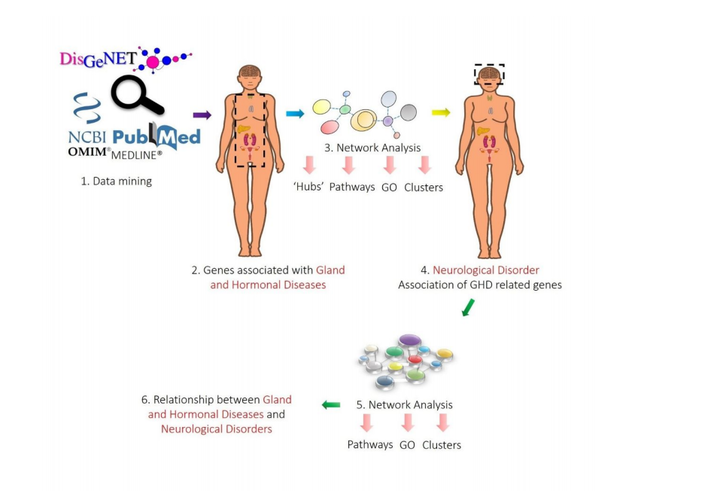Protein-Protein Interactions Network Model underlines the Link between Hormonal and Neurological Disorders

Abstract
Background: Gland and Hormonal Diseases (GHDs) or endocrine disorders constitute a class of non-communicable diseases that primarily results from either excessive or reduced secretion of hormones. These diseases are incurable; requires lifelong exhaustive treatment and might also entail invasive surgery. Therefore, the need for its molecular understanding and subsequent effective drug discovery is urgently needed. Many of these diseases also have neurological manifestations.
Results: In this study, we have constructed analyzed Protein-Protein Interactions (PPI) networks by integrating intricate genomic and proteomic data available on various GHDs. From the network, hub proteins, key pathways, and gene ontologies were derived. The members of this network were then investigated for unravelling strong/de nitive association with neurological disorders and network of neurological disorder associated genes was also constructed. Functional clusters in both the GHDs and neurological disorders were analyzed and compared. Based on our analyses we have identi ed the key players that are crossroads between GHDs and neurological disorders.
Conclusion: We have nally predicted possible relationships between the protein IGF1 and its interacting partners SOX2, SOX4 and SOX9 in diseases such as type 1 diabetes, sensorineural hearing loss and intellectual disabilities which should be investigated further for unveiling the molecular mechanisms and discovery of novel biomarkers.